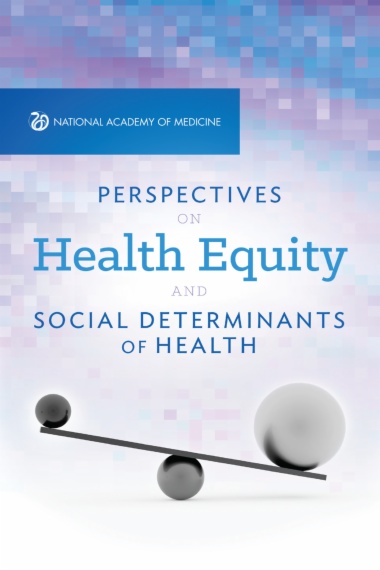Social factors, signals, and biases shape the health of our nation. Racism and poverty manifest in unequal social, environmental, and economic conditions, resulting in deep-rooted health disparities that carry over from generation to generation. In Perspectives on Health Equity and Social Determinants of Health, authors call for collective action across sectors to reverse the debilitating and often lethal consequences of health inequity. This edited volume of discussion papers provides recommendations to advance the agenda to promote health equity for all. Organized by research approaches and policy implications, systems that perpetuate or ameliorate health disparities, and specific examples of ways in which health disparities manifest in communities of color, this Special Publication provides a stark look at how health and well-being are nurtured, protected, and preserved where people live, learn, work, and play. All of our nation's institutions have important roles to play even if they do not think of their purpose as fundamentally linked to health and well-being. The rich discussions found throughout Perspectives on Health Equity and Social Determinants of Health make way for the translation of policies and actions to improve health and health equity for all citizens of our society. The major health problems of our time cannot be solved by health care alone. They cannot be solved by public health alone. Collective action is needed, and it is needed now.
- Cover
- Front Matter
- Introduction: Social and Structural Determinants of Health and Health Equity
- Section I: Health Equity Research and Policy
- 1 Health Inequities, Social Determinants, and Intersectionality
- 2 Identifying and Implementing Opportunities to Realize Health Equity Through a Lifespan Lens of Legal and Policy Research
- 3 The Character Assassination of Black Males: Some Consequences for Research in Public Health
- 4 Promoting Positive Development, Health, and Social Justice Through Dismantling Genetic Determinism
- 5 Philosophical Perspectives on Social Justice: A Framework for Discussing a Children, Youth, and Families Health Policy and Research Agenda
- Section II: A Systems Approach to Health Equity
- 6 Expulsion and Suspension in Early Education as Matters of Social Justice and Health Equity
- 7 Lessons for Health Equity: Military Medicine as a Window to Universal Health Insurance
- 8 Principles of Adolescent- and Young-Adult-Friendly Care: Contributions to Reducing Health Disparities and Increasing Health Equity
- Section III: Advancing Health Equity in Communities of Color
- 9 Stories About Black Men in the Media and their Consequences for Health
- 10 Challenges and Promise of Health Equity for Native Hawaiians
- 11 Fetal Alcohol Spectrum Disorders in African American Communities Continuing the Quest for Prevention
- 12 Urgent Dispatch: Calling on Leadership to Respond to Violence in Black Neighborhoods as a Public Health Crisis
- Appendix A: Paper Abstracts
- Appendix B: Agenda: Armchair Discussions of Social Justice and Equity Across the Life Course
- Appendix C: Program of "Engaging Allies in the Culture of Health Movement"
- Appendix D: Author Biographies

